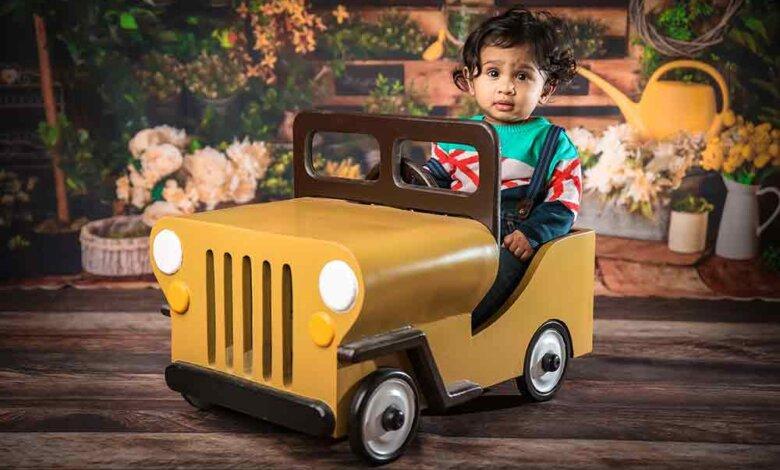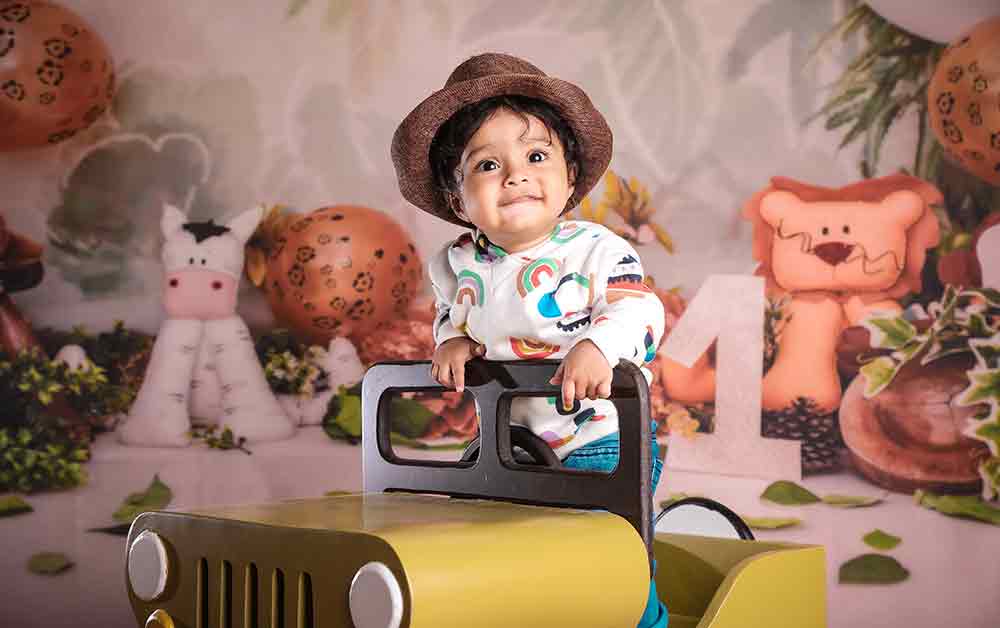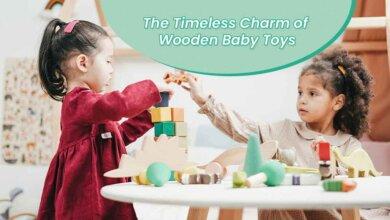Exploring the Fascinating World of Baby’s Toy Cars: A Comprehensive Guide
Car Adventures Unveiled: A Comprehensive Guide to Infant Car Toys

Introduction to
Baby Toy Cars
A. The importance of play in a child’s development
Play is a critical aspect of a child’s development, allowing them to explore their surroundings, enhance their cognitive skills, and develop important social abilities. It promotes healthy brain development and helps children learn about the world around them.
B. Understanding the benefits of toy cars for babies
Toy cars offer a multitude of advantages for babies, stimulating their senses, fostering the refinement of fine and gross motor skills, and encouraging imaginative play. Playing with toy cars can also enhance their cognitive abilities and problem-solving skills from an early age.
Factors to Consider when Choosing a Baby’s Toy Car
1. Age-appropriate features and design
It is essential to select a toy car that is suitable for the baby’s age to ensure their safety and maximize their enjoyment. Look for features such as rounded edges, no small parts, and sturdy construction to prevent potential accidents and choking hazards.
2. Safety considerations for infants
When selecting a toy car for infants, prioritize safety features such as non-toxic materials, secure seat belts, and stable wheels that can withstand their early attempts at mobility. Opt for toys that adhere to safety standards and regulations to minimize any potential risks.
3. Stimulating educational aspects
Select toy cars that offer educational elements, such as shapes, numbers, or colors, to engage and stimulate the baby’s developing senses. Toys with interactive buttons, lights, and sounds can provide an enriching learning experience.
Different Types and Models of Baby Toy Cars
Push-along cars for early walkers
Push-along cars are perfect for babies who are just starting to explore their environment independently. These toys encourage the development of balance, coordination, and walking skills while providing the excitement of pushing a vibrant vehicle.
Ride-on cars for developing motor skills
Ride-on cars are ideal for babies and toddlers who have developed their walking abilities. They allow children to practice their balance, coordination, and steering skills, enhancing their fine and gross motor skills.
Remote-controlled cars for independent play
Remote-controlled cars provide older babies and young children the opportunity to experience a sense of independence and control.
Benefits of Baby’s Toy Cars on Child Development
Enhancing fine and gross motor skills
Playing with toy cars allows babies to refine their fine motor skills by manipulating the car’s wheels, buttons, or levers. Pushing, pulling, and steering the toy car also aids in the development of gross motor skills, promoting strength and coordination.
Promoting cognitive development and problem-solving
Toy cars offer cognitive stimulation by allowing babies to observe cause-and-effect relationships by pushing or operating buttons to make the car move or produce sounds. Children can explore problem-solving skills as they navigate the toy car through obstacles or figure out how to operate remote-controlled models.
Encouraging imaginative and pretend play
Baby’s toy cars facilitate imaginative play, allowing children to create stories, scenarios, and adventures. By assuming the roles of drivers, mechanics, or passengers, they develop their imagination, creativity, and storytelling abilities.
Easy-grip handles for better control
Choose toy cars with ergonomic and textured handles, encouraging a secure grip for the baby to maneuver the toy comfortably. The handles should be appropriate in size and shape for the baby’s hands, ensuring they can easily grasp and navigate the toy car.
Built-in safety features for worry-free play
Look for toy cars that have built-in safety features such as seat belts, adjustable speed controls, or non-slip wheels. These features provide added peace of mind for parents, ensuring a safe and secure play experience for their babies.
Engaging lights, sounds, and interactive elements
Toy cars with engaging lights, sounds, and interactive buttons captivate the baby’s attention and offer a multi-sensory experience. These features stimulate the baby’s senses, enhancing their interest and engagement in play.
Best Practices for Introducing Baby’s Toy Car to Your Child
Age-appropriate guidelines for starting play
Follow the age recommendations provided by the manufacturer to determine when it is suitable to introduce the toy car to your baby. Starting at the appropriate age ensures that the baby can fully enjoy and benefit from the toy car without any safety concerns.
Creating a safe play environment
Ensure the play area is free from potential hazards, such as sharp objects, small parts, or obstacles that could jeopardize the baby’s safety. Ensure the toy car is operated on a flat and even surface, both indoors and outdoors, to prevent accidents and falls.
Encouraging parent-child interaction during playtime
Participate in playtime with your baby and the toy car, offering encouragement, support, and interactive engagement. Participate in imaginative play scenarios, stimulating their language development and fostering a strong parent-child bond.
Maintaining and Cleaning Baby’s Toy Cars
Understanding proper cleaning techniques
Regularly cleaning and sanitizing toy cars is essential, especially if they come into contact with the baby’s saliva or dirt. Follow the manufacturer’s instructions to ensure the use of appropriate cleaning methods, preventing damage to the toy car.
Storing toy cars to prolong their lifespan
Proper storage of toy cars when not in use helps maintain their condition and prolong their lifespan. Consider using labeled containers or dedicated storage areas to keep the toy cars organized and free from damage.
DIY Toy Car Projects: Fun and Creativity for Parents and Children
Using recycled materials for homemade toy cars
Engage in DIY projects with your child to create unique and environmentally friendly toy cars using recycled materials. Explore creative possibilities with cardboard, bottle caps, or other materials to encourage imaginative play and bonding.
Collaborative craft projects with your child
Collaborate with your child to design and customize their toy cars using crafts like painting, stickers, or decoupage. These endeavors spark creativity and refine fine motor skills, empowering the child with a genuine sense of ownership over their creation.
Safety Measures and Precautions for Baby’s Toy Car Usage
Supervision guidelines for babies and toddlers
Always supervise babies and toddlers while they play with toy cars to ensure their safety and prevent accidents. Monitor their play and intervene if necessary, especially in situations that may pose a risk, such as uneven terrain or near stairs.
Ensuring toy cars meet safety standards
Prioritize toy cars that carry safety certifications to ensure compliance with standard safety requirements. Look for labels indicating compliance with safety regulations and choose reputable brands known for their commitment to quality and safety.
Precautions for outdoor play and traffic areas
Exercise caution when allowing the baby to play with toy cars outdoors, especially near traffic or uneven surfaces. Choose secure and enclosed spaces, away from busy roads and sharp edges, enabling the baby to fully immerse in their playtime without any restrictions.
Introducing Baby’s Toy Car to Siblings or Playmates
Encouraging sharing and cooperative play
Teach children the value of sharing and taking turns when playing with the toy car, fostering cooperative play with siblings or playmates. Encourage them to engage in imaginative play scenarios together, promoting social skills and collaboration.
Managing conflicts and teaching social skills
Provide guidance and conflict-resolution strategies when conflicts arise during shared playtime with the toy car. Encourage communication, compromise, and empathy to help children develop essential social skills and respect for others.
Track sets and ramps for exciting races
Elevate the play experience with track sets and ramps, enabling babies to create thrilling race courses for their toy cars. These accessories promote hand-eye coordination, spatial awareness, and creativity.
Customizable parts for personalization
Look for toy cars with customizable parts, such as stickers or interchangeable body panels, allowing the child to create a unique and personalized design. Customization fosters creativity, critical thinking, and a sense of ownership over their toy car.
Additional toys and props for expanded play scenarios
Add extra toys and props such as miniature figures, road signs, or playsets to encourage the child’s imagination and create more elaborate play scenarios. These additions facilitate storytelling, role-playing, and further the development of their communication skills.
Choosing the Right Size and Design for Baby’s Toy Car
Considering the child’s age and body proportions
Select a toy car that is appropriate in size and design based on the child’s age, body proportions, and physical capabilities. Ensure that the baby can operate and manipulate the toy car comfortably, without any struggle or risk of injury.
Evaluating the design based on the child’s interests and preferences
Consider the child’s interests, such as favorite colors or themes, to select a toy car that aligns with their preferences, capturing their attention and promoting engagement. Matching the design to their interests can ignite their curiosity and further enhance their play experience.
Adapting to the available indoor or outdoor play space
Take into account the available play space, whether indoors or outdoors, to choose a toy car that suits the area’s size and terrain. Toy cars that are adjustable or compact-sized tend to be more versatile and can be easily accommodated in limited spaces.
Understanding the Role of Toy Cars in Gender-Neutral Play
Breaking stereotypes and encouraging inclusivity
Toy cars can play a crucial role in breaking gender stereotypes by promoting inclusive and gender-neutral play.
Encouraging all children, regardless of gender, to engage with toy cars allows for diverse play options and nurtures their interests.
The benefits of diversified play choices for children
Environmental Impact and Sustainability of Baby’s Toy Cars
Evaluating eco-friendly materials and manufacturing processes
Consider toy cars made from eco-friendly materials such as sustainable wood or recycled plastics, reducing the environmental impact. Look for manufacturers that prioritize sustainable production practices, minimize the use of non-renewable resources, and promote ethical manufacturing.
Recycling and upcycling options for outgrown toy cars
When a baby outgrows their toy cars, consider recycling or upcycling the toys to minimize waste. Donate them to charitable organizations, pass them on to other families, or repurpose them creatively to extend their lifespan and reduce landfill contributions.
Ensuring Toy Car Safety: Recalls and the Significance of Routine Check-ups
Staying informed about product safety alerts
Stay updated on toy car safety recalls or product safety alerts through official channels and websites. Regularly check for any recalls or notifications that might affect the toy car’s safety to ensure the baby’s well-being during play.
Conducting periodic inspections for wear and tear
Regularly inspect the toy car for any signs of wear and tear, such as loose parts, sharp edges, or damaged wheels. Ensure that all components of the toy car are in good condition to prevent potential accidents and maintain its safety.
Responding to recalls promptly
In the event of a toy car recall or safety concern, respond promptly by following the manufacturer’s instructions.
Reach out to the manufacturer, retailer, or appropriate authority to address the concern and guarantee the baby’s safety.
Addressing Common Concerns About Baby’s Toy Cars
The safety of non-walking babies playing with toy cars.
Toy cars designed for non-walkers prioritize safety by offering features suitable for their age group, such as rounded edges, soft materials, and interactive elements. Supervise babies during playtime at all times to ensure their well-being and prevent any potential accidents.
Do toy cars have any negative impacts on child development?
When used appropriately and in moderation, toy cars do not have negative impacts on child development. It is important to balance playtime with various toys and activities to provide a well-rounded developmental experience.
Can toy cars be used to promote learning in older children?
Toy cars can serve as educational tools for older children to explore concepts such as speed, momentum, and basic mechanics. Designing challenges or experiments that involve toy cars can promote critical thinking, problem-solving, and scientific inquiry.
Conclusion: The Endless Joys and Benefits of Baby’s Toy Cars
Baby’s toy cars offer an expansive world of benefits for child development, including the enhancement of fine and gross motor skills, cognitive development, and the promotion of imaginative play.
By choosing age-appropriate, safe, and engaging toy cars, parents can provide their babies with a fascinating and educational play experience that ignites their curiosity and fosters their overall growth.
FAQs:
What is the best age to introduce a toy car to a baby?
- The best age to introduce a toy car to a baby depends on their individual development, but typically, babies around 12 months and older show an increased interest and motor skills necessary for engaging with toy cars.
How can parents ensure the safety of their children while playing with toy cars?
- Parents can ensure toy car safety by selecting age-appropriate toys, supervising play, creating a safe play environment, and choosing toys that meet safety standards and guidelines.
Can baby toy cars be used outdoors as well?
- Yes, baby toy cars designed for outdoor use can be enjoyed in safe, open areas. Ensure the terrain is smooth, away from traffic, and free of obstructions or potential hazards.
Are there any alternatives to battery-operated toy cars?
- Yes, there are alternatives to battery-operated toy cars, including push-along or ride-on Baby Toy cars that rely on the baby’s physical movements to propel the car.
How can toy cars contribute to imaginative play and creativity?
- Toy cars provide a canvas for imaginative play as children create stories, scenarios, and adventures around them. They can engage in role-play as drivers, passengers, or mechanics, nurturing their creativity and storytelling skills
Can toy cars help in developing important social skills in children?
- Yes, toy cars can contribute to the development of social skills by promoting sharing, turn-taking, cooperation, and communication when playing with siblings or playmates.
What are some recommended brands for quality baby toy cars?
- Some recommended brands known for their quality baby toy car include Fisher-Price,



